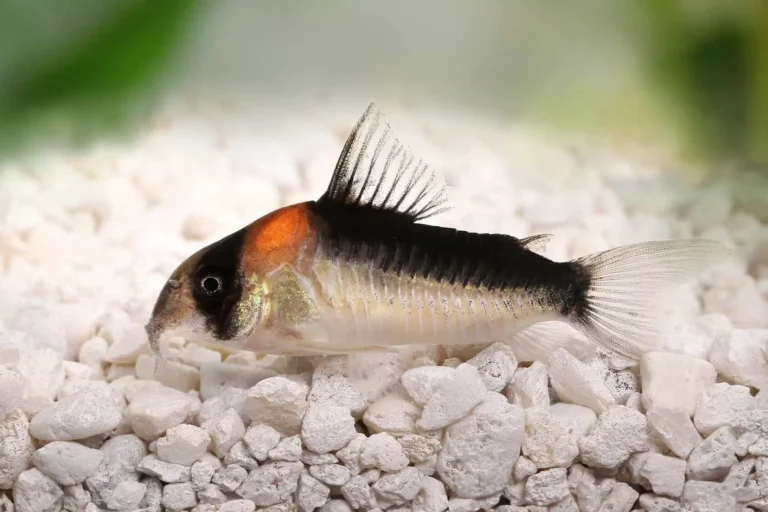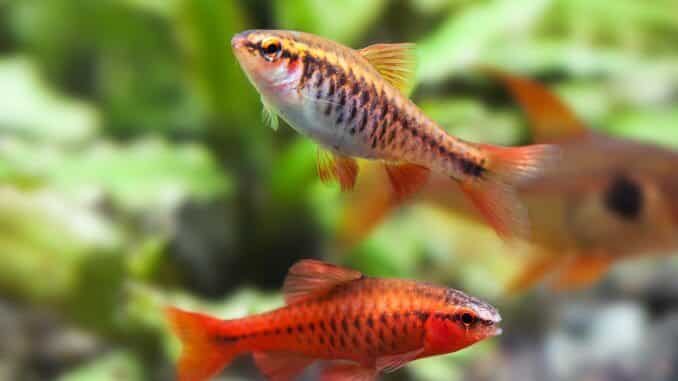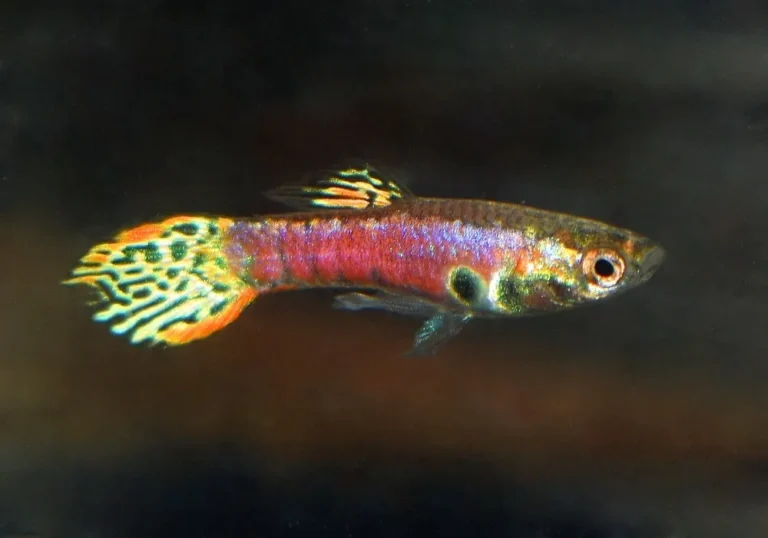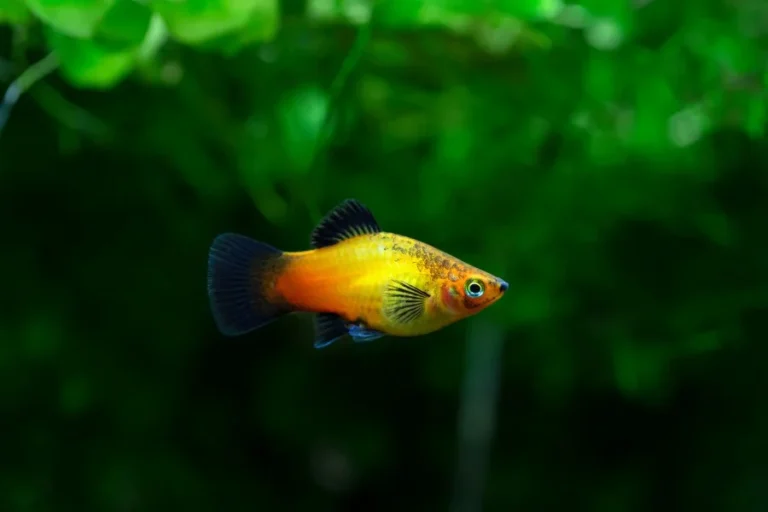Harlequin Rasbora: A Schooling Beauty Bringing Grace and Harmony to Your Tank
The aquarium hobby is not only about creating a serene haven in our homes but also about cherishing the delicate balance and natural beauty of aquatic life. Among the myriad of freshwater fish species, the Harlequin Rasbora stands out as a symbol of grace and tranquility, perfect for both the novice aquarist and the seasoned hobbyist.
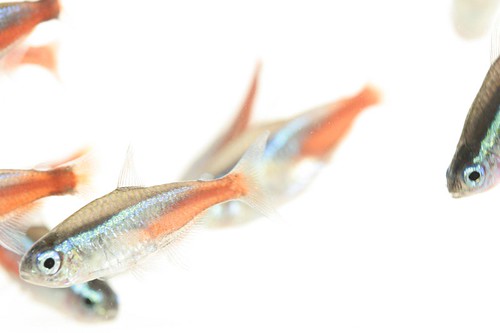
Characteristics of Harlequin Rasbora
Physical Elegance in Every Ripple
The Harlequin Rasbora, scientifically known as Trigonostigma heteromorpha, is renowned for its striking appearance. A slender body adorned with two distinct horizontal stripes; a bold red slash cutting through the dark patch surrounding its tail makes it a significant presence within any aquarium. The shimmering silver scales with hints of green under the right light add to its regal display, showing the fish off to its best advantage.
Behavior and Sociability
Not just a sight to behold, the Harlequin Rasbora is a social creature that thrives when kept in a school. This tight-knit group behavior is not only a joy to observe but is also essential for their well-being. In a school, these fish are far more active, playful, and will even exhibit shoaling behavior, moving as one in a synchronized dance.
Tank Requirements
Caring for these beauties means understanding their habitat needs. Harlequin Rasboras are found in forest streams in Southeast Asia where the water is usually soft and slightly acidic. In a home aquarium, replicating these conditions, along with the cover of plants and driftwood, will be greatly beneficial. They do best in a planted tank with subdued lighting to mimic their natural habitat.
Benefits of Keeping Harlequin Rasbora
Tank Harmony and Aesthetics
The Harlequin Rasbora is not just a solitary spectacle but elevates the overall aesthetic of your tank. The sight of a school moving harmoniously among the lush underwater flora can turn even the most basic setup into a delightful display reminiscent of the aquatic sanctuaries found in nature. Their calm and gentle nature adds an aura of peace, making them ideal for community tanks.
Low Maintenance and Peaceful Nature
For the conscientious aquarist, the Harlequin Rasbora offers a low-maintenance pet without the territorial aggression often seen in other fish. They are not finicky eaters and are generally undemanding when it comes to tank maintenance. Their peaceful disposition also makes them an excellent choice for community tanks where they’ll coexist without disturbance.
Tips for Caring for Harlequin Rasbora
Water Quality and Temperature
To ensure the vitality of your Harlequin Rasboras, maintaining optimum water parameters is crucial. They prefer a pH range of 6.0 to 7.8 and a temperature between 73 to 81°F (23-26°C). Investing in a good-quality heater and a reliable pH testing kit will aid in keeping their environment stable and conducive to their health.
Feeding Habits
These fish are omnivorous and will accept a variety of food. While they appreciate live or frozen fare like brine shrimp and daphnia, they are by no means picky eaters and will do well on a diet of high-quality flake or pellet food. Be sure to feed them sparingly, only what they can consume in a few minutes, to prevent overfeeding and maintain good water quality.
Tank Mates Compatibility
Being peaceful by nature, Harlequin Rasboras make excellent tank mates for a wide array of freshwater species such as Tetras, Corydoras Catfish, Dwarf Gouramis, and other characins. Ensure that any potential tank mates share similar water parameter requirements to avoid stress on any of the inhabitants.
Common Mistakes to Avoid
Overfeeding
New aquarists often make the mistake of overfeeding their fish. Remember, Harlequin Rasboras have tiny stomachs, and overfeeding can lead to health issues and poor water quality. Feed them a small amount a couple of times a day, and consider fasting them one day a week to ensure they digest their food properly.
Inadequate Tank Size
A common issue is the underestimation of required space for a school of Harlequin Rasboras. They are energetic swimmers, so a larger tank is necessary for a school to thrive. As a general guideline, a group of six should not be housed in anything smaller than a 20-gallon tank.
Lack of Social Companionship
These are shoaling fish and therefore need to be kept in groups of at least six. Failing to provide a large enough school can lead to stress and a lack of natural behavior. The presence of a sizable school will undoubtedly bring out the best in your Rasboras, showcasing their true, vivacious nature.
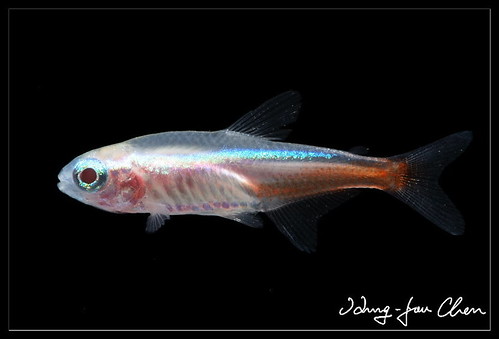
Conclusion
The Harlequin Rasbora encapsulates the essence of harmony within an aquatic environment. Its stunning coloration, soothing presence, and the unspoken camaraderie they exhibit in a group have the power to transform your aquarium into a serene slice of nature. By understanding their unique needs and respecting their social dynamics, you can create a captivating underwater world that radiates with the enchantment of these beloved fish. Whether you are new to the hobby or an old hand at fishkeeping, the addition of the Harlequin Rasbora to your aquatic family promises an experience of beauty and grace.


